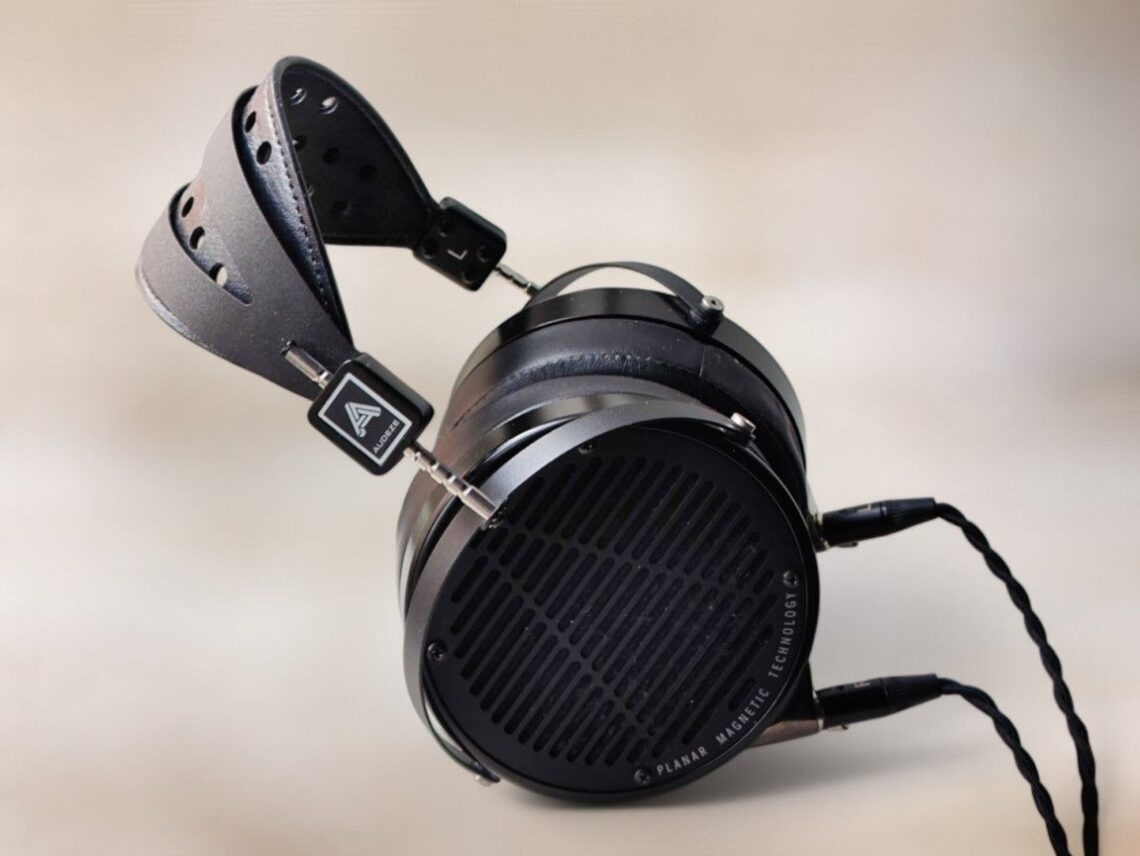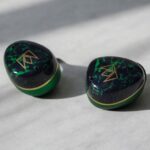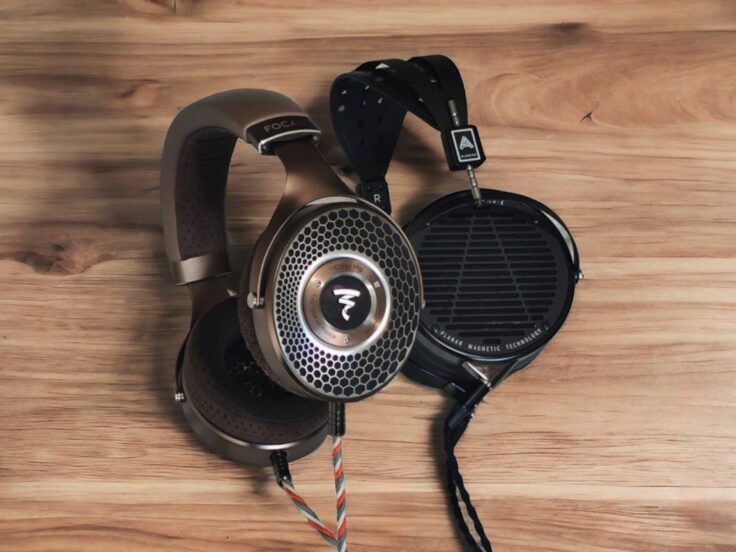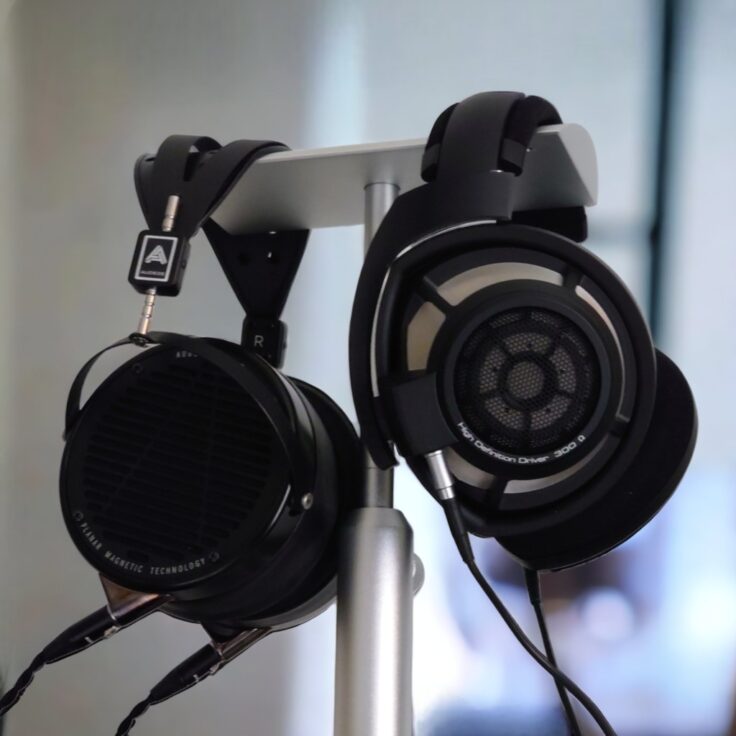The planar magnetic Audeze LCD-X was launched back in 2013 as a low impedance, higher sensitivity option to the LCD-2 and 3. It is aimed at studio work and professionals, and it became indeed a successful venture. Audeze has made some silent but major changes to the headphones over the years but didn’t release a statement on the details until 2020. The latest version of the LCD-X is often cited as “LCD-X 2021”. According to Audeze, all LCD-X produced after late 2020 are the new version.
The changes are many, but most importantly, the driver has been modified. The original version was specified as 22 Ohms and 96 dB/1mW, after 2021 the numbers are 20 Ohms and 103 dB/1mW. The LCD-X now comes with upgraded pads, a new headband, smaller fazors (waveguides) and different grills than the original, with metal mesh rather than fabric protection.
The LCD-X is Audeze’s most successful headphone, and it is with good reason. Especially after the 2021 update, it’s a great sounding and well balanced headphone, yet still having a touch of that good old classic Audeze house sound. Even though Audeze has launched two new headphones targeting studio work with the MM100 and MM500, they have wisely kept the popular LCD-X in their lineup, along with the LCD-2, LCD-2 Classic and the LCD-3. This makes the corner flagship, the LCD-4, the only discontinued headphone in the LCD lineup. The LCD-series are beginning to become living legends, like e.g. Sennheiser’s HD600, HD650, and the AKG K701 variants. I really like that about Audeze. Too many good headphones have been discontinued. With regards to the LCD-X, I am also very appreciative of Audeze keeping the prices down, making it more competitive as some of the competition increase their prices without better sound quality in return.
The LCD-X has been sold in two variants, with only the accessories being the difference. The simplest package is called the Creators Edition. Priced at 1199 USD, it includes a 1.9m unbalanced TRS jack cable and a travel case. The 1699 USD Premium Edition gives you a better looking, premium travel case and an additional 4 pin XLR balanced cable. For understandable reasons the cheapest version is more popular, and also most available. At the time of writing, I could not find the Premium Edition on Audeze’s webpage, so it might have been discontinued.
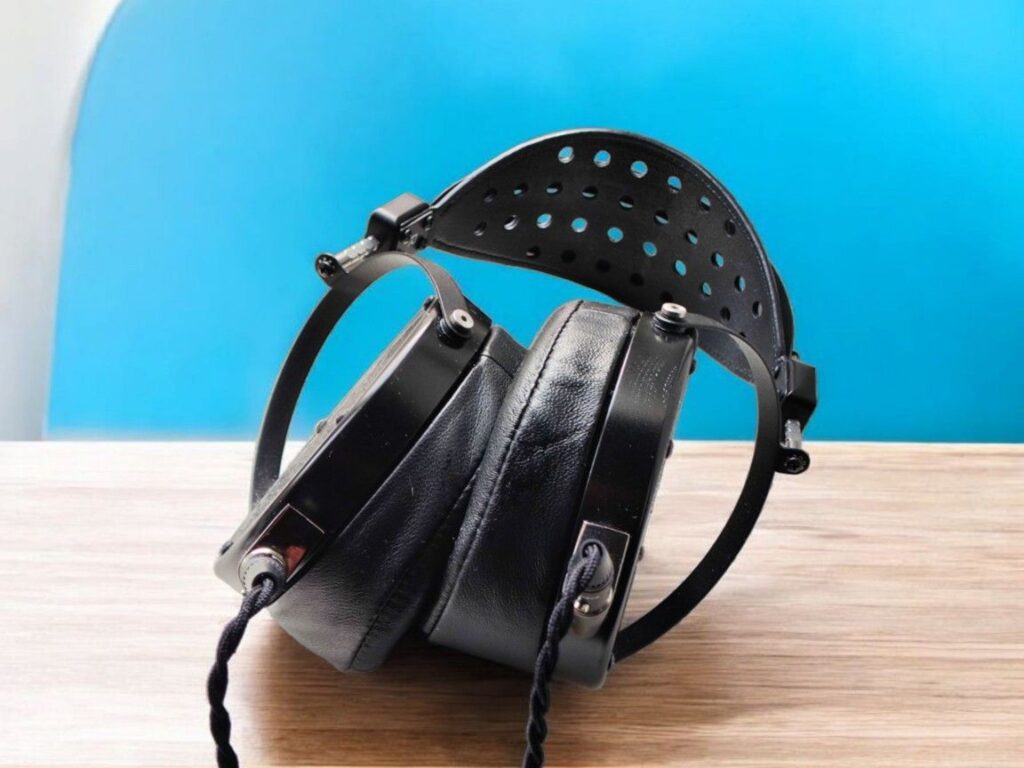
LCD-X SPECIFICATIONS
- Open back construction
- Planar magnetic driver
- Transducer size: 106 mm tall
- Sensitivity: 103 dB/1mW (at Drum Reference Point)
- Impedance: 20 ohms
- Diaphragm type: Ultra-Thin Uniforce™
- Magnetic structure: Proprietary magnet array
- Phase management: Fazor™ waveguides
- Magnet type: Neodymium N50
- Maximum SPL: >130dB
- Frequency response: 10Hz – 50kHz
- THD: <0.1% @ 100 dB SPL
- Max power handling: 5W RMS
- Min recommended power: > 100mW
- Recommended power level: >250mW
- Cable: 1.9m (6.2ft) length, XLR termination on headphone end with single-ended 1/4″ (6.3mm) TRS jack.
- Wire material: 20 AWG high-purity OCC audio-grade copper
- Weight: 612g
- Made in the USA
- What’s Included: LCD-X headphones, Travel case, 1.9m cable 4-pin XLR cable with 1/4″ single ended adapter
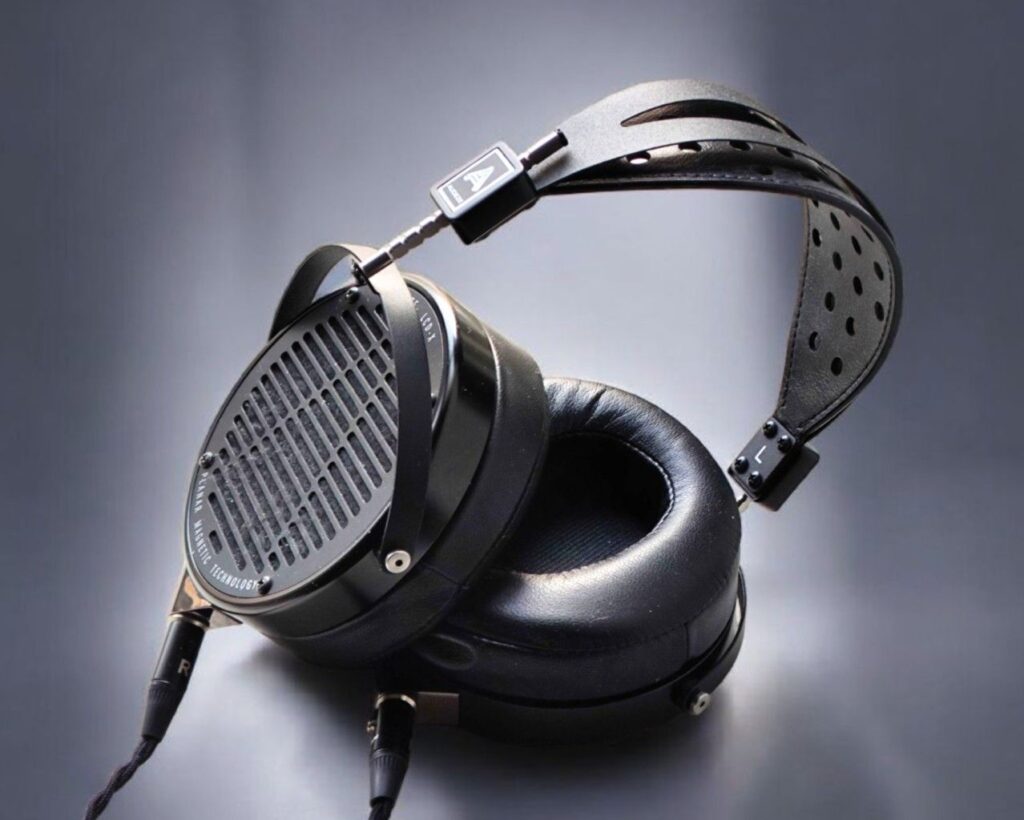
BUILD AND COMFORT
The Audeze LCD-X is solidly built and weighs a hefty 612g. Despite this, the weight is well distributed, making it surprisingly comfortable. The headband provides excellent support, while the large, ultra-soft earpads enhance comfort. A drawback with most Audeze headphones is that they glue the pads to the cups. This is done to maximise seal, but it makes it a lot of work to change pads., which is a pity: Pad-rolling can be a very interesting and efficient way to tune the headphones to your liking.
Like most Audeze headphones, the LCD-X features a detachable cable system with a 3-pin mini XLR connector on each cup. There isn’t any need for a 3-pin connector, I might add. Two would be enough, and you cannot use the Audeze LCD-X with a cable only on one side like e.g. many professional Beyerdynamic headphones. However, availability and reliability probably made Audeze go for this solution back in the day and they have stuck with it since.
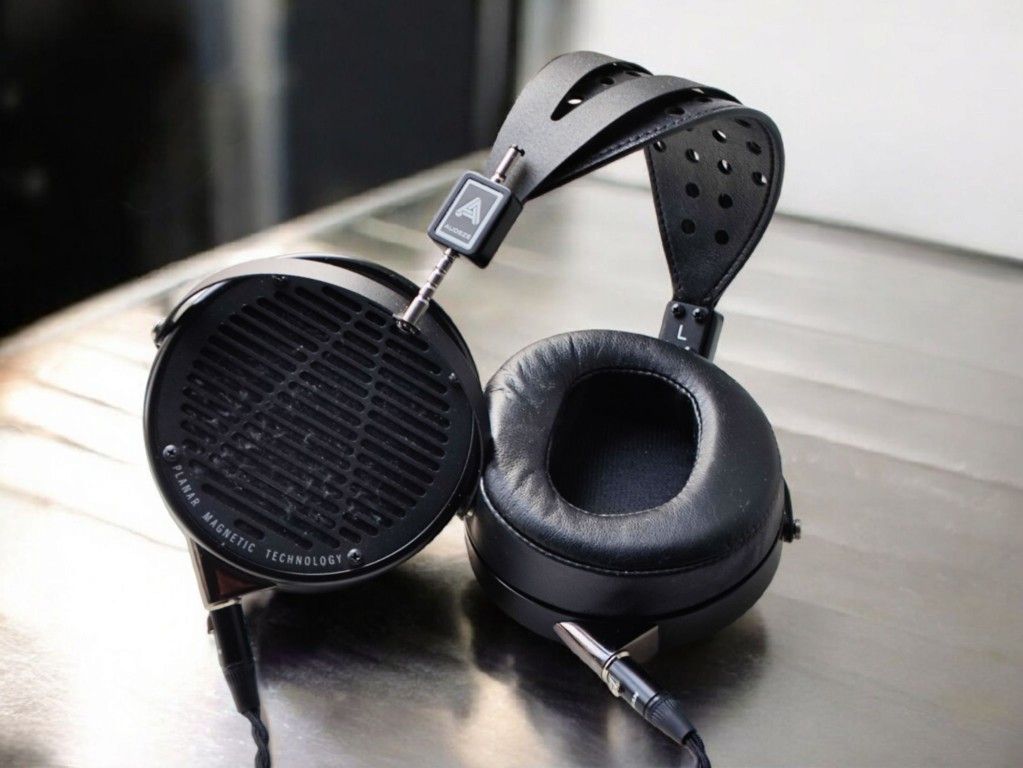
LISTENING IMPRESSIONS
I used the Bryston BHA-1 amplifier with the RME ADI-2 DAC FS for this round, to make sure I gave the LCD-X great conditions. As I will come back to later, however, the LCD-X sounds basically just as good with lesser amps.
Lazarus by David Bowie
The bass is stunning, there is an abundance of texture and detail, while it also is quite punchy. The instrument separation is excellent and the imaging is very good. I find the tonal balance to suit this track perfectly.
Come Away With Me by Norah Jones
Norah Jones’ vocals are warm and present with lots of texture. The piano is clear and crisp, the bass very well defined.
Summer 3 Vivaldi Recomposed by Max Richter
There’s good separation and nice layering, although the amount of space between the instruments could be larger. The tonal balance is very nice, the strings have a delicate timbre as well as both bite and texture.
New Life Baby Paris by Mala
The bass is very linear and neutral. It’s tight and right. The percussion is snappy, the vocals present, standing out in the mix. It feels very neutral.
S.O.S. by Tingvall Trio
Most of all, I would describe the sound as clean and neutral. And a very nice listen.
Daddy Lessons by Beyonce
Very spacious, great detail and separation. The bass is rock solid, vocals clear and present, but not thick or overly warm.
Eusexua by FKA twigs
This is a wonderfully well produced electronic track with beautiful vocals. The exceptionally well controlled bass is to die for.
Almost Like The Blues by Leonard Cohen
Above all, the rendering of this song feels neutral. The vocals, while not particularly energetic, are well-balanced and never feel recessed. Layering and separation are good.
Jambi by Tool
The electric guitars are crisp and richly textured, while the bass, though modest in quantity, is impressively detailed, textured, and tight. Vocals are clear, well-separated, and naturally present. Though this track contains some sibilance, the LCD-X manages it nicely, revealing the sibilance but not exaggerating it.
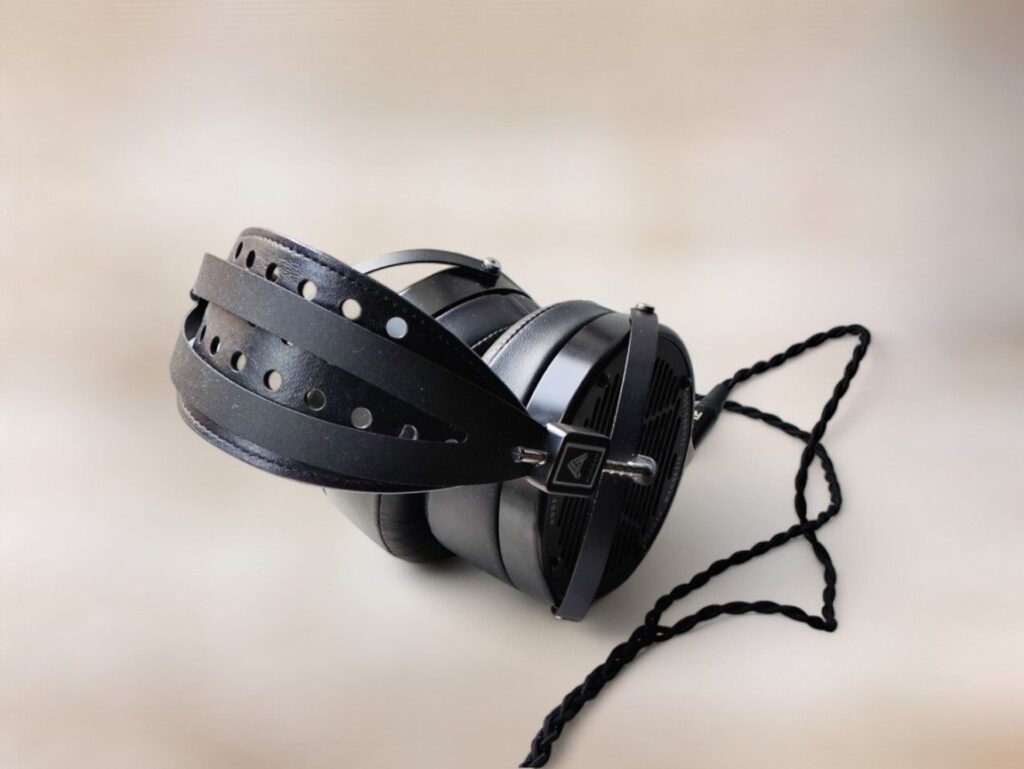
WRAPPING IT UP
Sound Signature
Above all, the LCD-X feels exceptionally neutral, tuned for a flat response. The bass is linear, the mids are present without added warmth or energy, and the highs are balanced—neither recessed nor exaggerated.
Treble
The treble is clean—neither overly crisp nor too laid-back, striking a natural sounding balance.
Midrange
The midrange is slightly dark: The LCD-X has less energy in the upper mids than many headphones, but to me, it never feels recessed. Rather, it’s offering excellent nuance and detail without excessive warmth or lushness.
Bass
The bass is completely neutral—no boost, no mid-bass hump, and no excess warmth. It’s simply tight, well-textured, and highly extended, delivering consistent and reliable performance. It starts to roll off around 30 Hz, but that frequency is so low it’s rarely significant.
Soundstage and Imaging
The soundstage is a bit intimate and not above average for this type of headphone. It’s definitely not as open and wide sounding as the best-in-class headphones HiFiMan XS or HD800. That’s said, the LCD-X is better than most closed-back headphones. Imaging and layering are excellent, though the space between instruments could be blacker for even better separation.
Detail, Dynamics, and Timbre
From top to bottom, detail retrieval remains consistently high. Dynamics are excellent at moderate to high volumes, but at lower volumes, the presentation may feel less engaging.
In terms of timbre, the LCD-X leans towards neutrality. The midrange is slightly dark, with less upper-mid energy than many other headphones, yet it in general maintains a remarkably linear and natural presentation, balancing detail and smoothness in a delicate manner.
COMPARISONS
HIFIMAN 1000v2 vs. LCD-X (2021)
The Hifiman HE1000v2 (now 1100 USD), released in 2016, remains a popular reference despite being replaced by the Stealth and Unveiled versions.
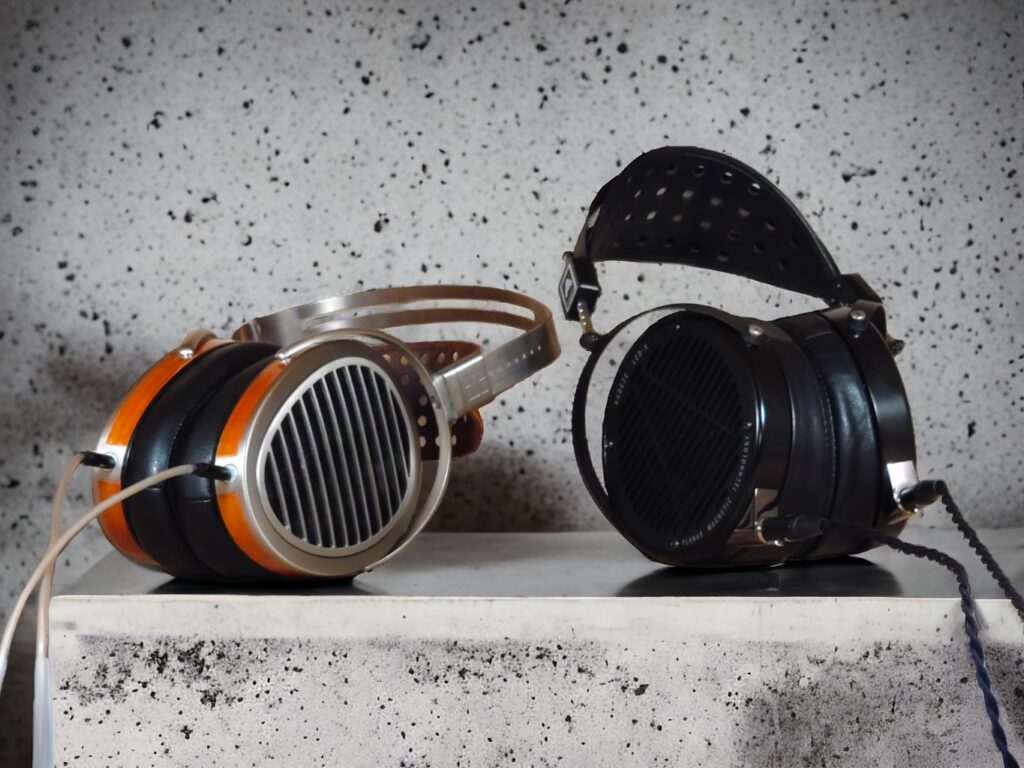
In terms of build, the two are quite different. The LCD-X, as noted, is built like a tank—heavy yet comfortable—while the HE1000v2 is lighter but larger and feels less robust.
When it comes to amplification, the HE1000v2 is significantly more demanding. The LCD-X is much easier to drive and pairs well with a variety of amps with minimal sound variation, whereas the HE1000v2 not only requires a powerful amp to perform at its best but is also quite particular about matching.
In terms of sound, the HE1000v2 has a brighter, more spacious sound with energetic treble and upper mids, compared to the LCD-X’s darker, smoother tone—which still feeling remarkably neutral.
Both planars have excellent bass, but even though it’s very tight in absolute terms, the LCD-X feels thicker and fuller. The mids are darker with the LCD-X since the HE1000v2 have more upper midrange energy. Further, the treble has more sparkle with the HE1000v2.
With a well-matched amplifier, the HE1000v2 delivers greater detail, a wider soundstage, and improved separation, whereas the LCD-X provides a smoother, more intimate presentation. The HE1000v2 feels snappier, while the LCD-X is slightly slower but remains naturally neutral and pleasant.
Overall, the HE1000v2 is brighter and more airy, while the LCD-X leans warmer and fuller, yet still maintains a neutral character. Both excel in bass and detail, but as noted, the HE1000v2 relies heavily on proper amplification, whereas the LCD-X is far less demanding in that regard.
- Amazon: Hifiman HE1000
QUAD ERA-1 vs. LCD-X (2021)
The ERA-1 (£690, 890 USD), like the LCD-X, is an easy-to-drive planar magnetic headphone and serves as a reference in its price range. However, the ERA-1 stands out for being notably lighter, smaller, and significantly more affordable compared to the LCD-X.
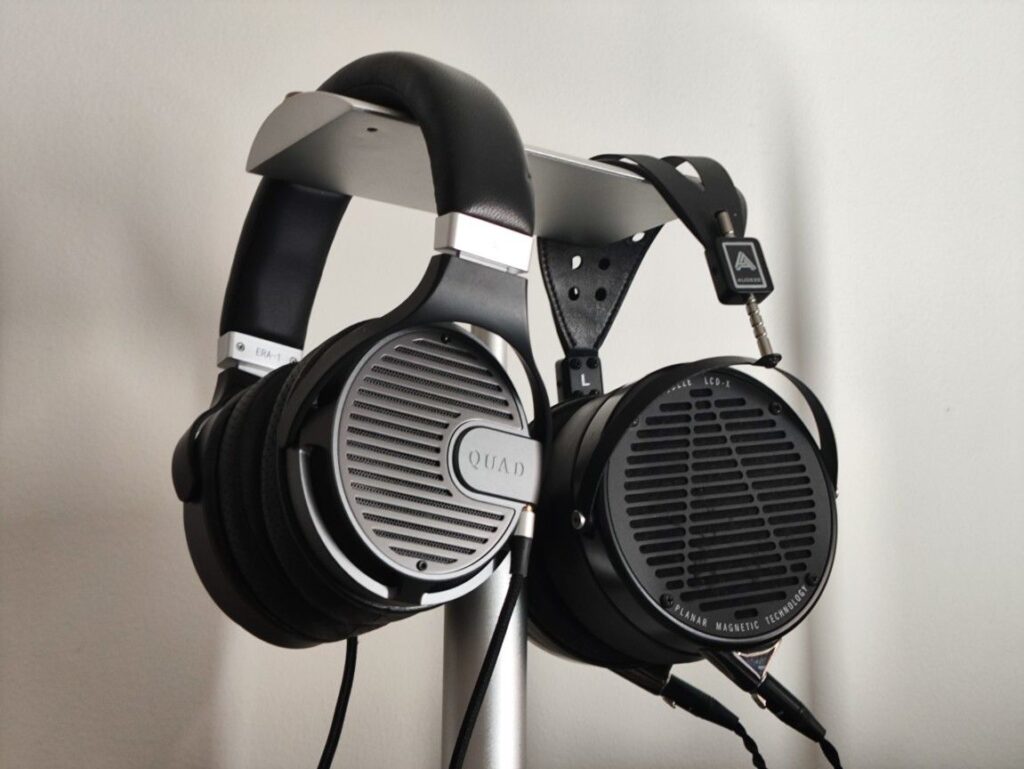
Both offer excellent detail and enjoyable sound, with strong bass performance. However, the LCD-X has more tonal body and weight, giving it a bolder character. The midrange differs—crisper in the ERA-1, darker in the LCD-X—while the ERA-1 also has a brighter, crisper treble. Imaging is solid on both, but the ERA-1 has the larger soundstage.
Overall, the LCD-X offers more tonal weight and richness, but the ERA-1 delivers impressive performance for its price. While I more often prefer the LCD-X, I can easily see that others might favor the ERA-1.
FOCAL CLEAR MG vs. LCD-X (2021)
All Focal headphones feature dynamic drivers with a metal diaphragm. The original Clear was a success for Focal, and the Clear MG (1500 USD) follows a similar design, though it’s tuned slightly darker. This tuning is often compared to the classic Audeze house sound, so this is an interesting comparison to make.
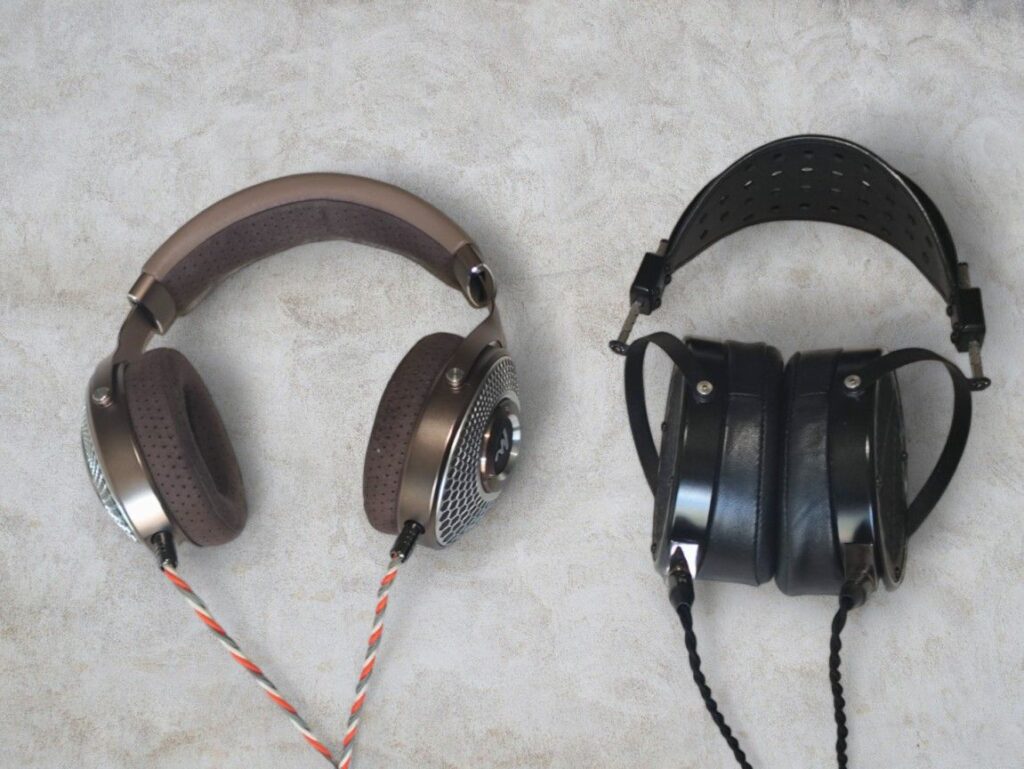
To me, both the Audeze LCD-X and Focal Clear MG offer a balanced sound, with quality bass, slightly darker mids, and neutral treble. The Clear MG feels airier and slightly brighter, while the LCD-X has fuller bass, smoother mids, and a more intimate soundstage. Both headphones excel in detail retrieval, with the LCD-X offering a smoother presentation and the Clear MG delivering a more dynamic performance.
While both are easy to drive, they scale well with better amplification. The Clear MG is a bit lighter with smaller cups, which might make it more comfortable for some users, but it lacks the amount of swivel action of the LCD-X.
Unlike the LCD-X, which has glued-on pads, the Clear MG has an excellent pad attachment design giving you ability to easily swap pads for sound tuning, something I’ve explored with great success and written an article about here:
My full comparison between the two headphones can be found here:
- Amazon: Focal Clear MG
SENNHEISER HD800S vs. LCD-X (2021)
The HD800S (1300 USD), still going strong since its launch in 2013, needs little introduction. It’s a slightly re-tuned version of the iconic HD800, which was originally introduced in 2009.
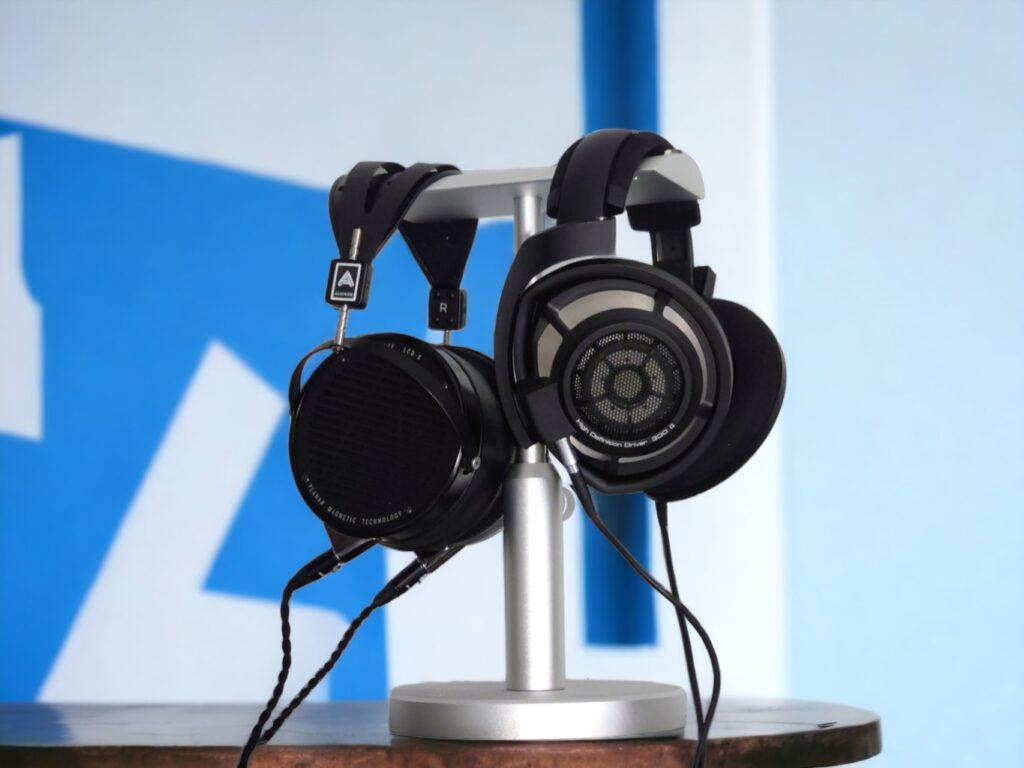
Build-wise, the HD800S is lighter and more comfortable than the LCD-X, however, it does have a more fragile plastic construction. Especially the headband is more delicate.
Sonically, they differ significantly in presentation, with the HD800S delivering a brighter, more open sound. Compared to the LCD-X, the HD800S has brighter treble, more pronounced upper mids, and a lighter bass response.
Even though the HD800S has less bass quantity, it still offers good extension for a dynamic driver, though with a gradual roll-off.
The HD800S is renowned for its vast soundstage, and there’s no contest in this area: it sounds significantly larger and airier than the LCD-X’s. However, when it comes to imaging, the headphones are more comparable.
Depending on the listener, the HD800S can be more fatigue inducing, though. Another important aspect to consider is that the HD800S performs better technically at lower volumes compared to the LCD-X, while the LCD-X shines at higher volumes.
Personally, while I appreciate the HD800S, I prefer the LCD-X for its darker tuning and fatigue-free listening experience.
- Amazon: HD800S
My full comparison of the two headphones can be found here:
AUDEZE LCD-2 Classic vs. LCD-X
The LCD-2 Classic (799 USD), often called LCD-2C, is basically a stripped down LCD-2 without Fazor wave guides in the magnets. The LCD-X and LCD-2C have a lot in common. In addition to them sharing the headband and cup design, the tuning is very similar. The general characteristics of the sound leaves little doubt that they come from the same manufacturer and have the same heritage.
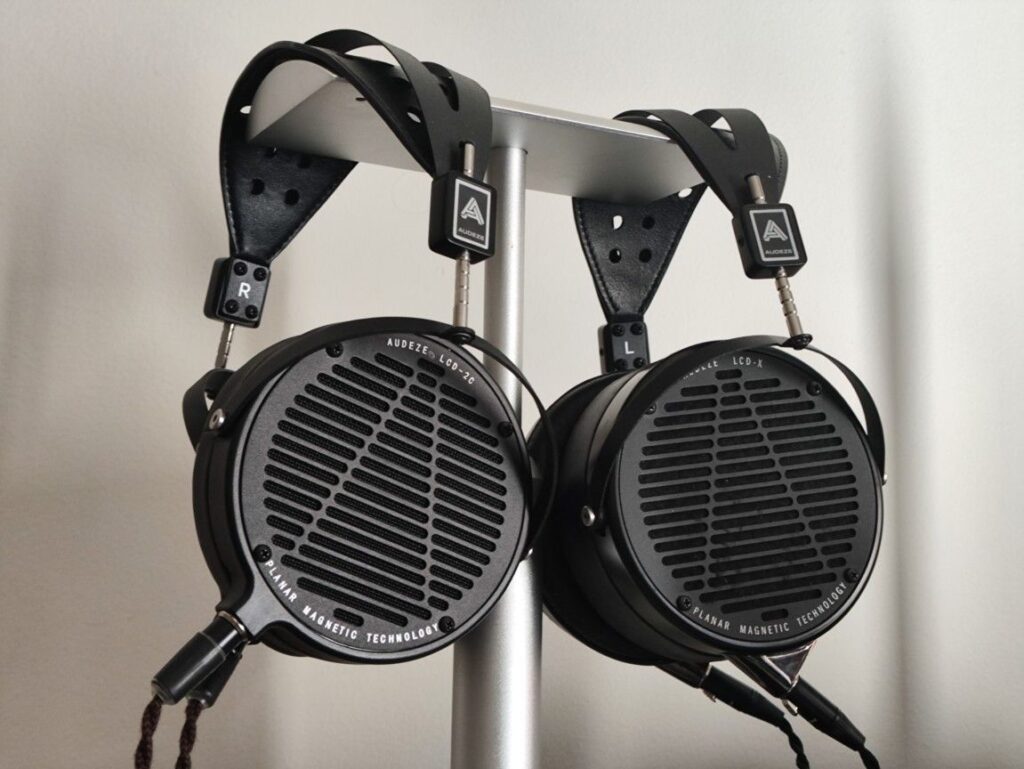
That said, there are differences. Comparing them on the same amp, the LCD-2C is slightly brighter and more diffuse sounding, but has a bigger soundstage. The LCD-X has better detail, is more nuanced and smooth. The tonality is slightly darker and while the soundstage is more intimate, the imaging is better.
I tested various amplifiers with both headphones, and it was clear that the LCD-2C was more responsive to amp swapping than the LCD-X. With a high-quality amp, the LCD-2C significantly closed the gap, making it sound much more on par with the LCD-X.
- Amazon LCD-2C
DCA ETHER 2 vs. LCD-X
The Ether 2 (2200 USD) from Dan Clark Audio, looks quite a bit like the LCD-X, but is light as a feather. At only 290g, the Ether 2 is actually half the weight.
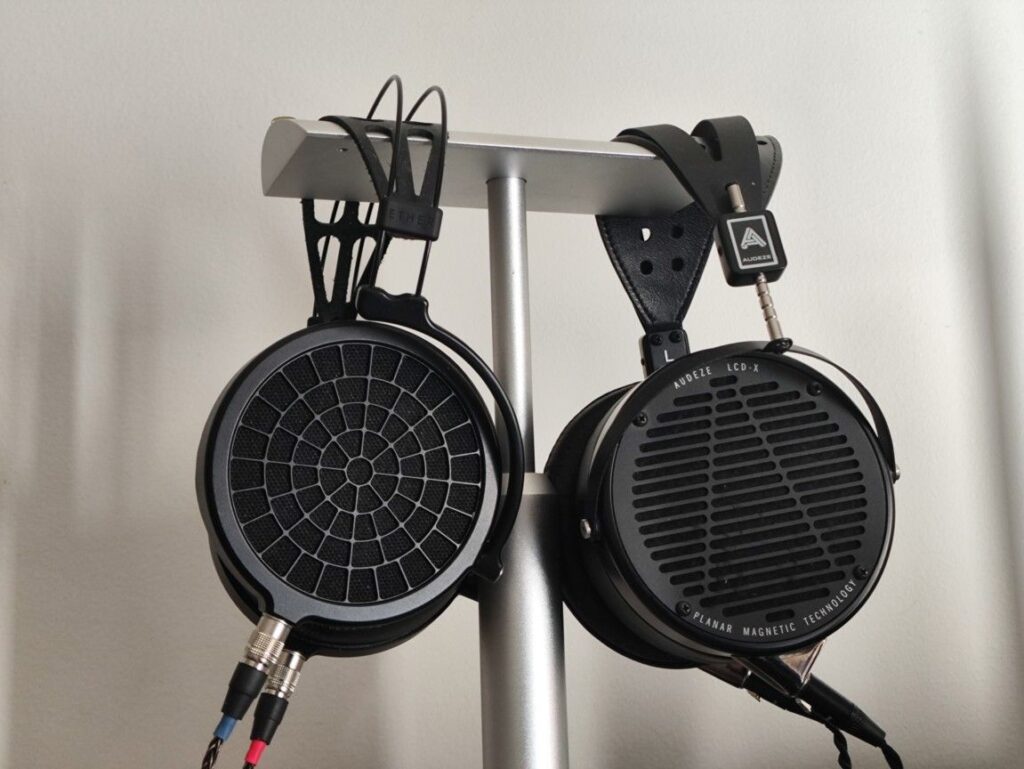
Sonically, the LCD-X and Ether 2 share a lot of similarities—they could almost be siblings from the same brand. Most notably, their tonal balance is very alike. However, other aspects set them apart. The Ether 2 offers superior detail, separation, imaging, and a larger soundstage. In many ways, it feels like an upgraded LCD-X, and the price difference is well justified if those qualities are what you’re looking for.
I’ll post a separate comparison review soon.
- Amazon search: Dan Clark Audio
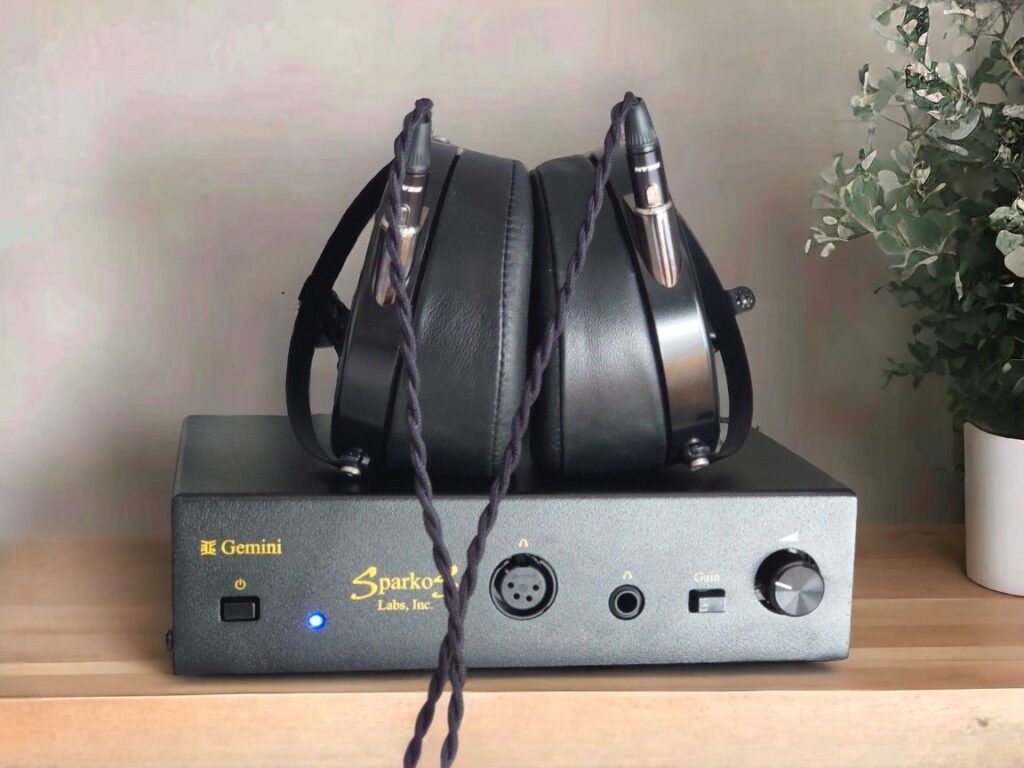
AMPLIFICATION
The LCD-X is easy to drive, but that doesn’t mean the amplifier is irrelevant. For most of my listening, I used the Topping A90, which proved to be an excellent match. When testing more expensive amplifiers like the Bryston BHA-1 and Erzetich Perfidus, I didn’t notice any significant improvement in sound quality. I might mention that the Perfidious isn’t the most silent of amps, and with the low impedance, high sensitivity LCD-X, there’s a low level hiss. This is a general concern with the LCD-X: Some amps aren’t silent enough.
Among more affordable options, the Monolith THX AAA 887 sounded quite close to the higher-end amps, while the Rebel Amp had a slightly drier character but remained enjoyable.
The Chord Mojo is good but was a noticeable step down from the Topping A90 and ADI-2 combo. The Schiit Magni Heretic lacked clarity and dynamism.
Using the RME ADI-2 DAC FS on its own as a DAC/amp combo unit works great with the LCD-X. It’s very clean, tight, well-balanced, and neutral-sounding. The ADI-2 is slightly less warm-sounding than the Topping A90 combo, though. There’s no hiss, even in high-power mode. Not that you need the high-power mode for the LCD-X, I might add.
Another interesting DAC/amp is the Mytek Liberty 2. It also sounds great with the LCD-X. In some ways, I prefer it over the ADI-2; it has a slightly warmer yet even a tiny bit clearer sound. However, the Liberty 2 isn’t completely silent, and there is a very, very slight background noise. It wouldn’t bother me at all, but it’s worth mentioning.
Finally, some words about tubes: When testing the Sparkos Labs Gemini hybrid tube amp, I was extremely pleased with the sound. There’s something special about the Gemini that enhances the sweetness in most headphones. Pairing the Gemini with the LCD-X results in a dynamic and detailed sound, while still adding a touch of organic warmth to everything. The mid-range is a bit thicker and sweeter; the details are all present but delivered in a smoother, more liquid manner.
I found the powerful, transformer-coupled Woo Audio WA22 all-tube amp to sound very similar to the Gemini when paired with the LCD-X.
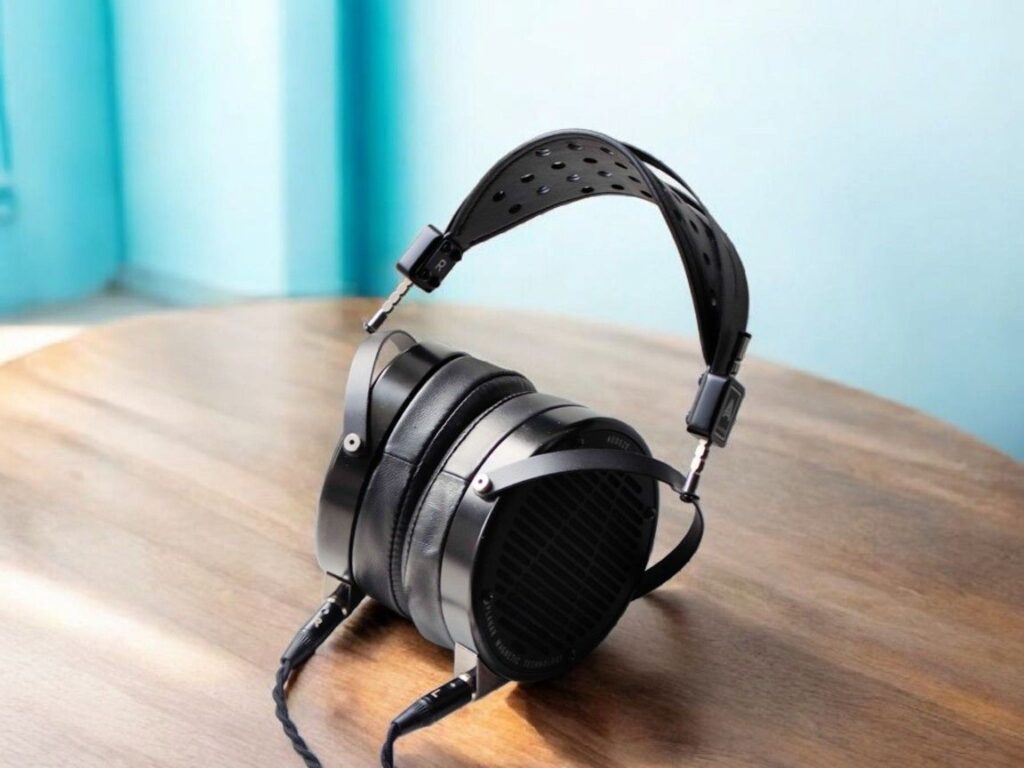
CONCLUSION
The Audeze LCD-X has proven its worth. Its capabilities have made it a favorite among both enthusiasts and professionals for years, and for good reason. If you don’t mind the weight, it is very comfortable, very sturdy, and the build is highly reliable. The sound is neutral, although some may find the midrange slightly on the darker side. It is very flexible when it comes to amplification and sounds good even from modest sources, though it scales well with better gear up to a certain point.
The price is very good for what you get, and by keeping it down, Audeze will make sure the LCD-X stays relevant. If I know Audeze, they’ll continue developing it. I hope they somehow focus on reducing the weight, which is the only thing that holds the LCD-X back from being even more popular
Thanks for reading. You can support us by purchasing anything using any of our affiliate links.
- Amazon: LCD-X
Any purchase you make on Amazon or Linsoul with any of our affiliate links will give us a small provision at no cost to you.
We only get a provision for items that are not returned, so there’s no incentive for us to recommend something that’s not good.
Linsoul : Headphones, Earbuds, Wireless Earbuds, Desktop DAC/AMP, Portable DAC/AMP, Digital Audio Players,
Amazon: Headphones, IEMs, Headphone Amplifiers, Home Audio or Anything else.
.
If you enjoyed this article or other content on The Headphoneer, you might consider leaving a small donation to keep this website up and running. No donation is too small. Thanks for supporting us!
If you like our work please follow us on Instagram, Facebook and Twitter , it will help us grow. Sharing is caring 🙂


